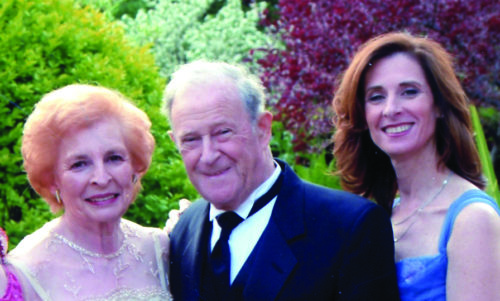Area High School Students and Teachers Attend Education Event Featuring Nationally Recognized Storyteller as Voting Rights Activist
March 15th, New Rochelle, NY – Over 350 students and teachers from 31 schools in Westchester, Dutchess, Putnam, Orange and Suffolk Counties attended the 21st Holocaust & Human Rights Education Center (HHREC) High School Institute event on March 15th at Iona University in New Rochelle, New York.
The program began with welcoming remarks by HHREC Executive Director Millie Jasper and Dr. Elena Procario-Foley, Brother John G. Driscoll Professor of Jewish-Christian Studies, and Dr. Tricia Mulligan, Provost and Senior Vice President for Academic Affairs of Iona University. Following the opening remarks, HHREC Director of Education Julie Scallero introduced keynote speaker Sheila Arnold. Ms. Arnold, CEO and Lead Performer of History’s Alive! appeared in character as Fannie Lou Hamer, an American voting and women’s rights activist and leader in the civil rights movement. She has performed as a Regional Storyteller at Colonial Williamsburg, the Valley Forge Teacher Institute, and at education conferences across the U.S.
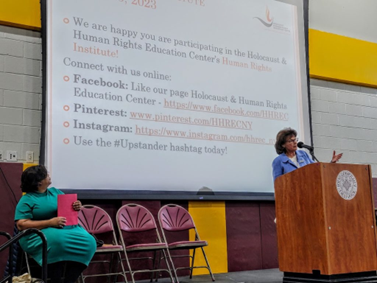
The HHREC Student Institute workshops were led by experienced facilitators to encourage open discussions, as teachers encouraged their students to engage as activists or “Upstanders” in response to human rights violations. Following the workshops, Deputy Westchester County Executive Ken Jenkins appeared to issue a proclamation that May 22nd to 26th will be “Westchester County Upstander Week,” This call to action was designed to encourage student activism and awareness by inspiring them to become “upstanders” (rather than bystanders) – and take an active role in changing the world by hosting an event in their communities to bring attention to a human rights issue.
The event culminated with a talk and Q&A with HHREC Board Chairperson and GenerationsForward Speakers Bureau member Michael Gyory. Gyory shared the story of his father’s cousin Agi Keleti, a 102-year-old Holocaust Survivor who survived the Nazis and outlasted the Communists to become the greatest female Jewish Olympian of all time – winning 10 medals in women’s gymnastics for her native Hungary. Agi is currently the oldest living Olympic medalist.

Students were also recognized for their work in promoting human rights in their schools and communities.
- The Richard A. Berman Leadership Award for Human Rights was awarded to Izzy Sampere and Allie Cooper of Byram Hills High School. This award is in honor of the longstanding commitment and dedication of Richard Berman to the Holocaust & Human Rights Education Center, and his commitment to community service and the education of ethically and socially responsible leaders for the global community.
- The Andy Cahn “Community Service” Award was presented to Lana Weiser of Scarsdale in memory of the contributions and commitment made by Andy Cahn, former Assistant Director of Education for the Holocaust & Human Rights Education Center, who was instrumental in the creation of the High School Human Rights Institute.
- The Neil Ginsberg Student “Upstander” Award was presented to Miyuki Oblitas of Mamaroneck High School. This award recognizes the contributions and commitment made by Neil Ginsberg to the Human Rights Institute for High School Student Leaders, and his dedication to the HHREC Educators Program Committee for over 20 years.
“We were very pleased at the response from area teachers and students who joined us in person for our program this year” said Julie Scallero, HHREC Director of Education. She added “It was very inspiring to hear from the students who were so well-prepared, and see their reactions as they heard from Sheila Arnold about the challenges faced by her character Fannie Lou Hamer and others as they struggled to achieve their right to vote. It was also encouraging to see the response to the talk by our Board Chair Michael Gyory about his cousin and the spellbinding story of how she survived the Holocaust to eventually become an Olympic medal winner and role model for our students. We believe the powerful messages we heard yesterday will resonate with these students for years as they become more active as ‘Upstanders’ to protect and preserve human rights.”
Participating schools included: Ardsley High School, Blind Brook High School, Briarcliff High School, Byram Hills High School, Denzel Washington School of the Arts, Dobbs Ferry High School, Eastchester High School, Edgemont High School, Hastings High School, Horace Greeley High School, Iona Preparatory School, John Jay High School, Mahopac High School, Mamaroneck High School, Newburgh Free Academy – Main Campus, Newburgh Free Academy – North Campus, Newburgh Free Academy – West Campus, New Rochelle High School, North Salem High School, Ossining High School, Peekskill High School, Pelham Memorial High School, Pine Bush High School, Pleasantville High School, Ridgefield High School, Rocky Point High School, Rye Neck High School, Scarsdale High School, Sleepy Hollow High School, Somers High School, and Westchester Youth Alliance.
The HHREC Student Institute was developed to further their mission by promoting student awareness of human rights issues on a local and global level, and to empower students to be upstanders by creating and implementing Action Plans in their schools and communities. HHREC has organized and offered this event to Westchester County area students and teachers since 2002. Past events have been hosted in partnership with Iona College in New Rochelle. For more information visit HHRECNY.org or contact Julie Scallero at jscallero@hhrecny.org.
Millie Jasper is the executive director of the Holocaust and Human Rights Education Center (HHREC). This news is courtesy of the HHREC.
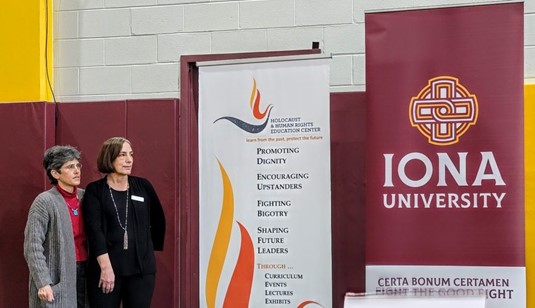
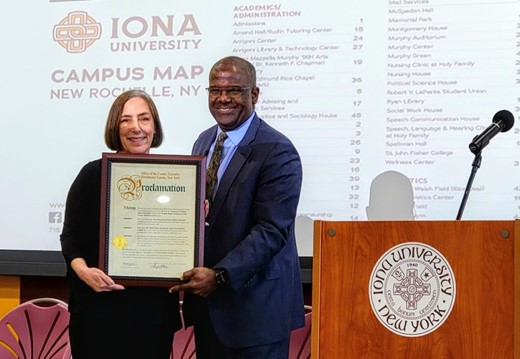
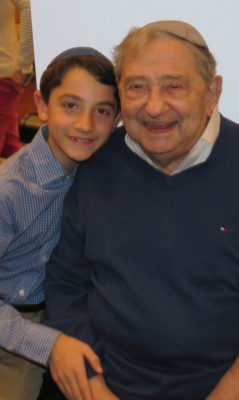
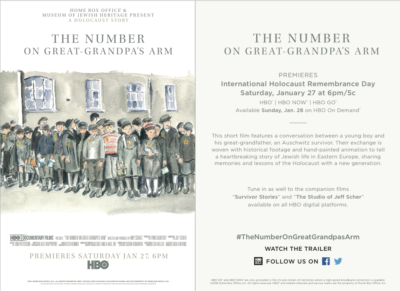
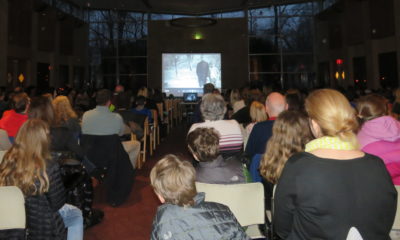
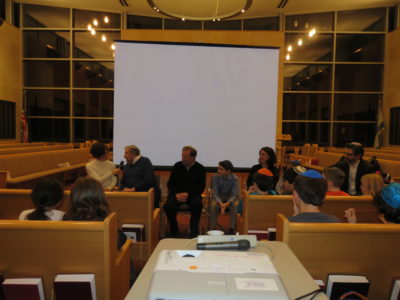 Rabbi Brusso noted fondly, “I wish I had a grandpoppy Jack.” Turning to Elliott, he offered his appreciation for “how you hold his hand and rub his arm.” He compared that kind of tenderness to Nazis “who treated people like objects.” Elliott’s example of caring and kindness, in contrast, are “how we preserve every human being.”
Rabbi Brusso noted fondly, “I wish I had a grandpoppy Jack.” Turning to Elliott, he offered his appreciation for “how you hold his hand and rub his arm.” He compared that kind of tenderness to Nazis “who treated people like objects.” Elliott’s example of caring and kindness, in contrast, are “how we preserve every human being.”